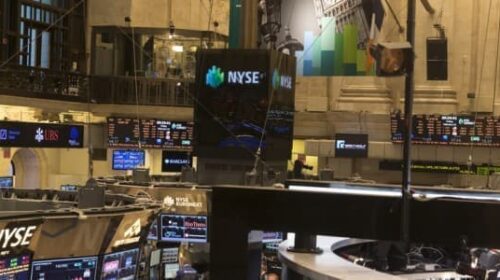The risk of the global economy slowing down further and slipping into negative growth territory has been on a strong increase in the past few months. So much so that oil prices lost about a quarter of their value in the third quarter after rising strongly over the first two quarters of the year.
It appears that this was only the beginning. Now, the UN is warning that a recession is imminent, and oil traders are selling their position and fleeing a market that may very soon see a positive development as OPEC+ is expected to agree to the deepest production cut since 2020.
The United Nations Conference on Trade and Development this week published a report in which it blamed monetary tightening for an imminent recession that will lead to a worst global stagnation than the 2008 financial crisis and the pandemic.
“According to the report, rapid interest rate increases and fiscal tightening in advanced economies combined with the cascading crises resulting from the COVID pandemic and the war in Ukraine have already turned a global slowdown into a downturn with the desired soft landing looking unlikely,” UNCAD said in a press release.
“In a decade of ultra-low interest rates, central banks consistently fell short of inflation targets and failed to generate healthier economic growth. Any belief that they will be able to bring down prices by relying on higher interest rates without generating a recession is, the report suggests, an imprudent gamble.”
The oil market is already in a state of emergency adaptation to the new danger. According to Reuters’ John Kemp, hedge funds and other institutional traders were net sellers for 10 of the last 16 weeks, reducing their positions across the most traded oil contracts by a combined 237 million barrels since June.
Further reflecting growing fears of a recession during the third quarter, Kemp’s figures showed that institutional traders reduced their bullish long-term positions on oil to a ratio of 3.61 to 1 from 6.68 to 1 in June.
Meanwhile, OPEC+ is tightening the reins in response to this sentiment, planning to reduce its production of crude substantially at its next meeting, taking place on Wednesday in Vienna.
“The OPEC ministers are not going to come to Austria for the first time in two years to do nothing. So there’s going to be a cut of some historic kind,” Dan Pickering from Pickering Energy Partners told CNBC this week.
Indeed, reports suggest a cut of over 1 million bpd in production, although some analysts have noted that the actual cut may be lower, with the official figure referring to OPEC+ production quotas rather than actual output. The organization has been falling significantly short of its quotas in the past few months, with the gap between quotas and actual production widening to 2.85 million bpd in August.
Yet because of the OPEC+ cut, analysts are virtually sure oil prices will rebound, perhaps, strongly, by the end of the year, despite the recession fears.
“Oil tanks as global growth concerns hit panic mode given a chorus of central bank commitments to fight inflation. It seems central banks are poised to remain aggressive with rate hikes and that will weaken both economic activity and the short-term crude demand outlook,” Oanda analyst Edward Moya told Reuters last month.
This week, oil gained 5 percent on the first day of trade for October thanks to the OPEC+ cuts, with Goldman now seeing Brent crude at $105 per barrel by the end of the year and WTI at $95 per barrel.
This suggests something that was already clear last year. Fundamentals might step aside for a while, but they always return to claim their role in oil price formation. The danger of a recession certainly has negative implications for oil demand growth, but in a context with tight supply, the outlook on prices invariably changes from a bearish to a bullish one, even though what is brewing is the worst recession in decades.





